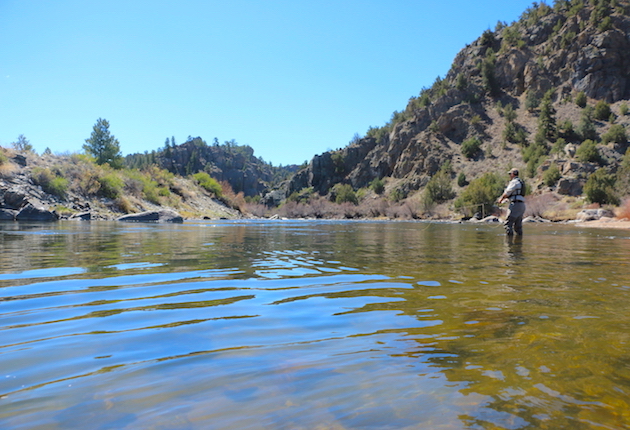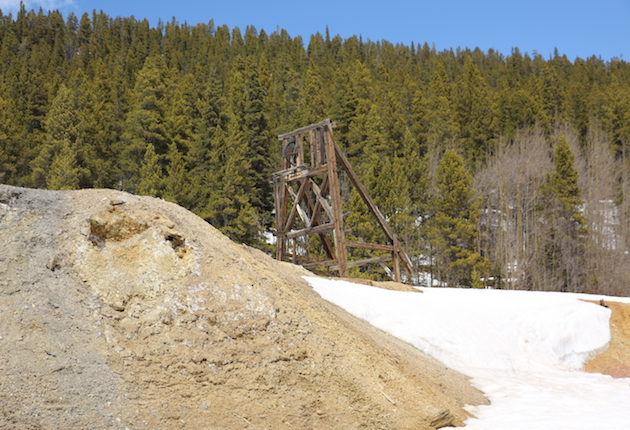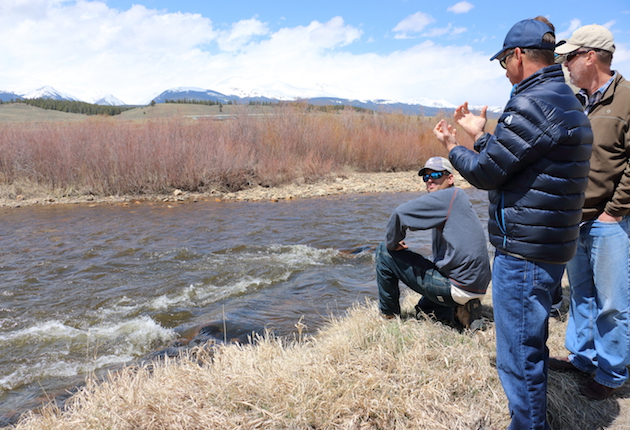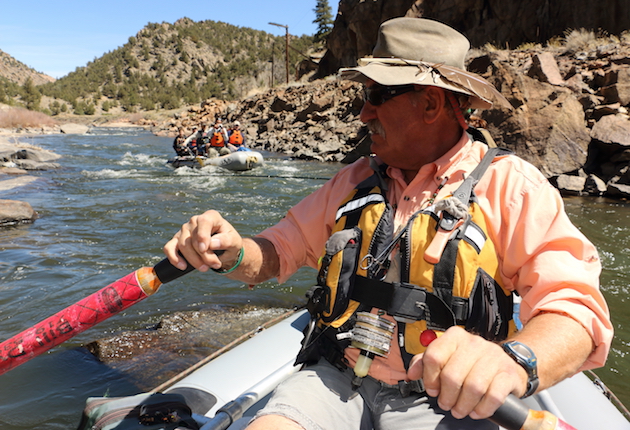The Browns of Browns
February 19, 2021



 Fishing,SCA Articles
Fishing,SCA Articles

Altitude sickness at 10,000 feet is easier to ignore when brown trout are poking on the fly I cast on the Arkansas River in Browns Canyon National Monument.
I know we are hovering around 10,000 feet because my nose is bleeding and I threw up on my morning run. It takes me a few days to adjust to Colorado’s elevation, but it only takes me a few minutes to appreciate the state’s fishing potential. Brown trout are poking at the black caddis fly I’m casting on the Arkansas River in Browns Canyon National Monument.
I’m on the front end of Bill Dvorak’s raft. The knee braces hit me hip high, but I don’t mind. The low water makes for a bumpy trip, and I’m barely staying in the raft while casting as fast as I can into every pocket we pass. The fishing feels frenzied, but that’s my usual mode so this river suits me, but I comment on the low flow with concern. Dvorak is quick to dismiss it.

“Every other river I run, water is good for fish,” says Bill Dvorak, owner of Dvorak Rafting, Kayaking and Fishing Expeditions. “But here on the Arkansas, low water is better for fish.”
The Arkansas is cold, high-mountain water running on a steep gradient, which spawners like, but that same water runs through country drowning in a rich mining history. The possibility of new mining claims in coming years is one of the reasons communities relying on Browns pushed for monument status and won it for 21,586 acres in 2015. Cleanup of abandoned mines is another reason.
A lot of decades went into the condition of today’s gold-medal river, which was once a Superfund site.
“Prior to 1992, Hayden Flats had very few fish. Now it has the best fish population on the Arkansas River,” says Greg Policky, Colorado Parks and Wildlife aquatic biologist. “You create the right habitat and get the metals out and the fish will certainly make it.”

Hayden Flats is a stretch of the Arkansas above the national monument boundary. It’s a mellower ribbon of water at the base of Colorado’s Collegiate Peaks. Wade fishermen are working its banks when I visit, and I spy big bugs on the footbridge. It’s hard to imagine metals dominating the area, but they did and in some places still do.
“The main thing with mine reclamation is keeping water out of the tailings,” says Jason Willis, Trout Unlimited mine restoration project manager. “Sometimes it’s easier to move the water rather than the waste.”
I can tell this river’s reclamation effort is all but easy. Even the bugs have changed. I’m fishing from a raft with a caddis pattern. The Arkansas is known for caddis blizzards. Towns even celebrate the hatch around Mother’s Day, but fishermen tell me there are less caddis these days. I ask Policky about this, and what anglers think is bad is actually good in this particular case.
“The river is so much more healthy today as far as overall health, and bugs are part of that,” Policky says.

The river is healthier with less mine waste so there’s more diversity among the bugs. Caddis can live in less than ideal water, and that’s why they were so prolific. Now the river is winding its way back to pristine, which encourages bug variety. So yes, there may be less caddis, but maybe one day the Arkansas will be so clean it will be worthy of stoneflies again.
I’ll admit I’m in no caddis blizzard, but the black pattern I’m throwing is working well. Browns are in Browns Canyon, and now that it’s a national monument, the tourism dollars this area relies on continue to increase as the health of the watershed continues to improve.
“When you look at a map, you don’t see wilderness areas,” Dvorak says. “You do see national monuments and national parks, and people are drawn to that.”
Kris Millgate is an outdoor journalist based in Idaho Falls, Idaho. See more of her work at tightlinemedia.com.
